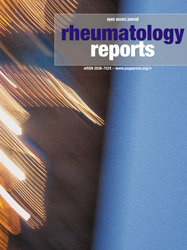Articles
16 October 2012
Vol. 4 No. 1 (2012)
Detection of progression of radiographic joint damage in case of very early osteoarthritis: sensitivity to change of quantitative analysis compared to qualitative grading

Publisher's note
All claims expressed in this article are solely those of the authors and do not necessarily represent those of their affiliated organizations, or those of the publisher, the editors and the reviewers. Any product that may be evaluated in this article or claim that may be made by its manufacturer is not guaranteed or endorsed by the publisher.
All claims expressed in this article are solely those of the authors and do not necessarily represent those of their affiliated organizations, or those of the publisher, the editors and the reviewers. Any product that may be evaluated in this article or claim that may be made by its manufacturer is not guaranteed or endorsed by the publisher.
1012
Views
557
Downloads






